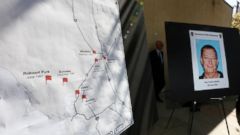


Basements will be filled with lost child reports at police stations.”ĭenmark was one of the biggest destinations for South Korean children in Europe, receiving about 9,000 adoptees – most of them from the 1960s to late 1980s when South Korea was ruled by consecutive military governments.ĭuring the height of the adoptions in the late 1970s and mid-1980s, agencies aggressively solicited newborns or young children from hospitals and orphanages, often in exchange for payments, and operated maternity homes where single mothers were pressured to give away their babies. “If you do a little bit of math, that would mean that from the 1970s and 1980s Seoul would be flooded with baskets with children lying around in the streets. “(In) a lot of papers, the Korean state at the time have stamped papers that say people were found on the streets,” he said. “None of us are orphans,” said Peter Møller, lawyer and co-head of the Danish Korean Rights Group, as he described the group’s members who filed the application to investigate on Tuesday.

If the commission accepts the request, it could trigger the most far-reaching inquiry into foreign adoptions in South Korea, which has never truly come to terms with the country’s child export frenzy engineered by past military governments.Ībout 200,000 South Koreans were adopted overseas during the past six decades, mainly to white parents in the United States and Europe. The Truth and Reconciliation Commission in the South Korean capital Seoul has up to four months to decide whether to accept the application collectively filed on Tuesday by the 53 adoptees in Denmark. Dozens of South Korean adoptees who were sent to Danish parents as children in the 1970s and 1980s have demanded the South Korean government investigate the circumstances surrounding their adoptions, which they say were corrupted by practices that falsified or obscured children’s origins.


 0 kommentar(er)
0 kommentar(er)
